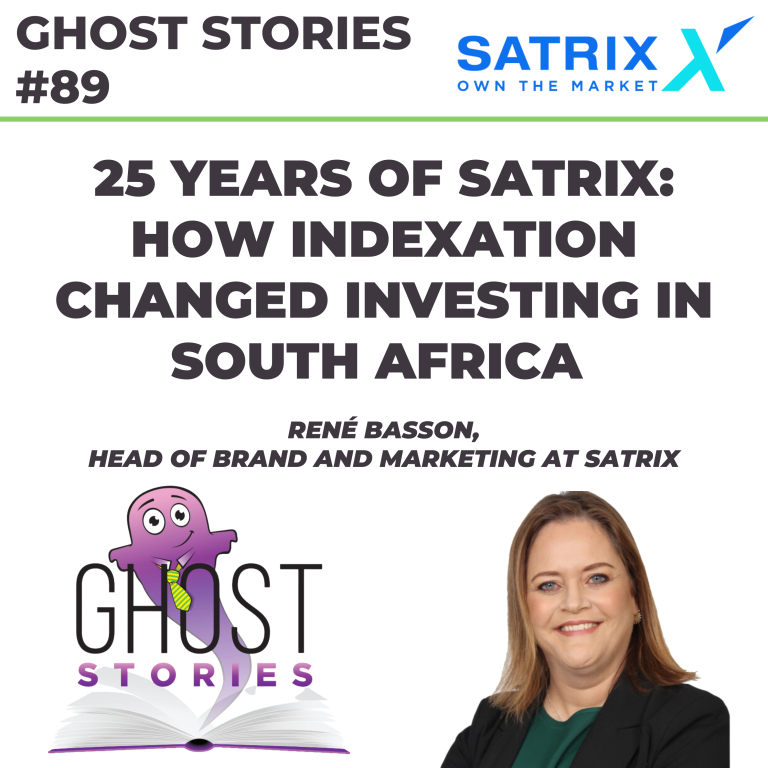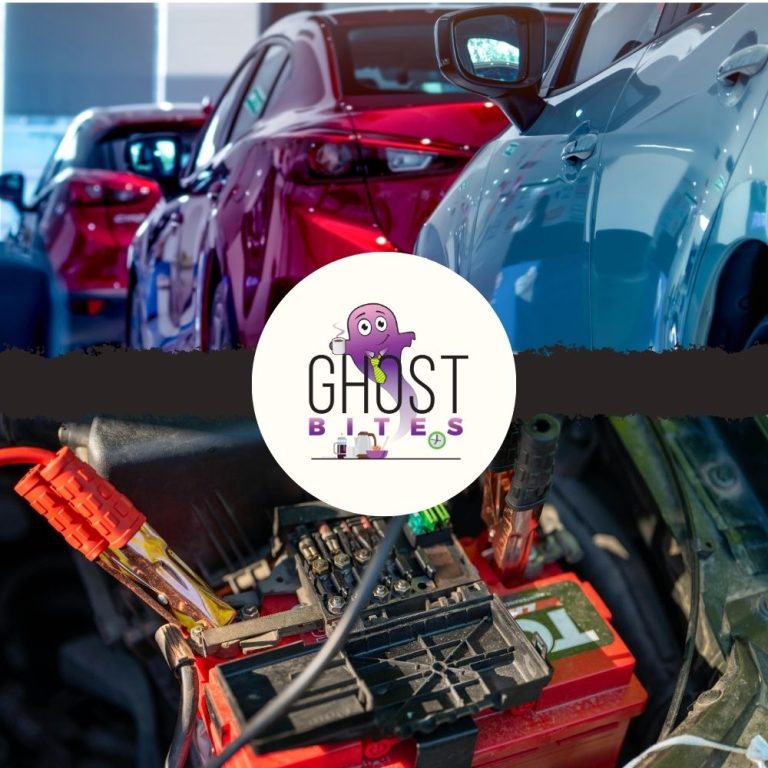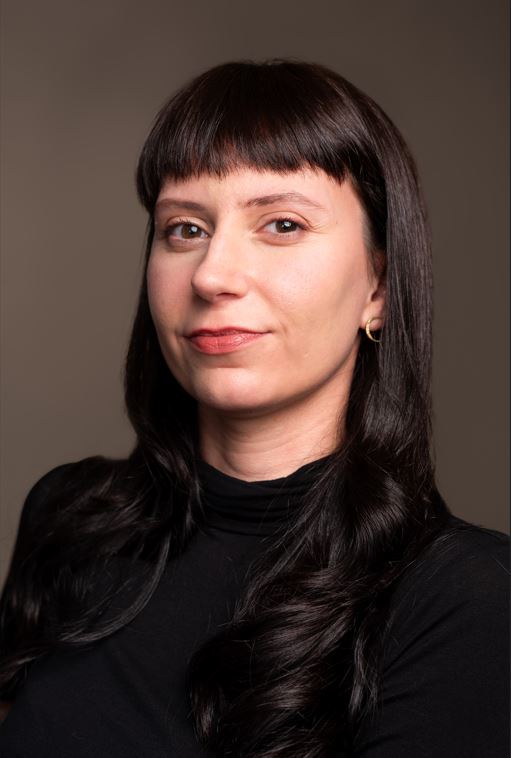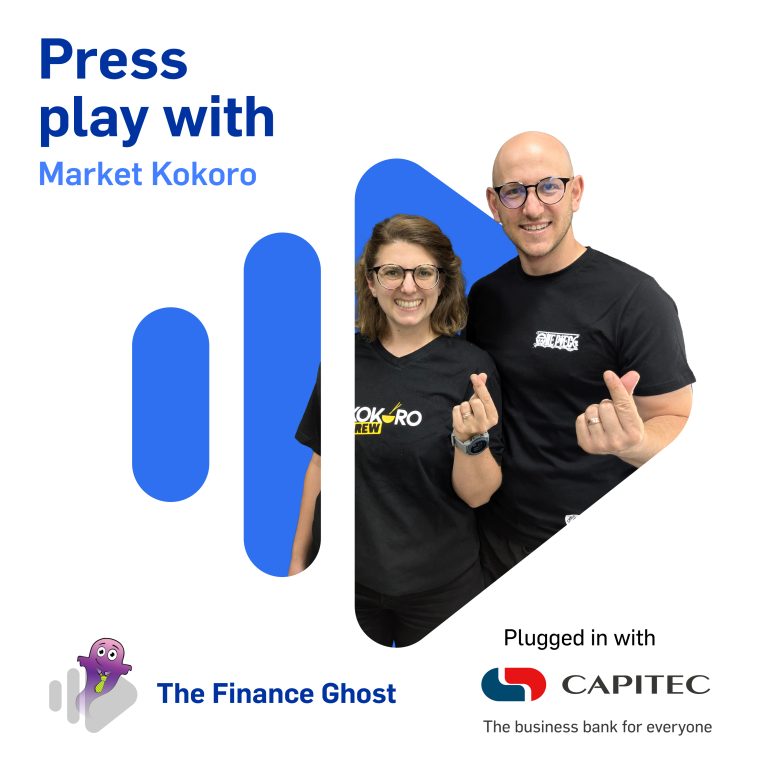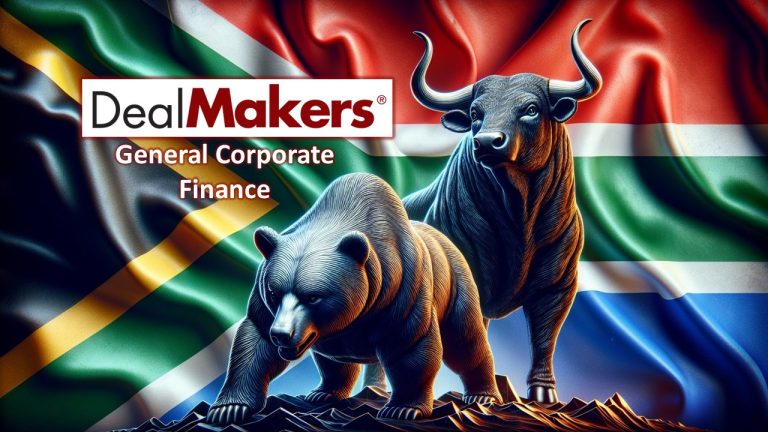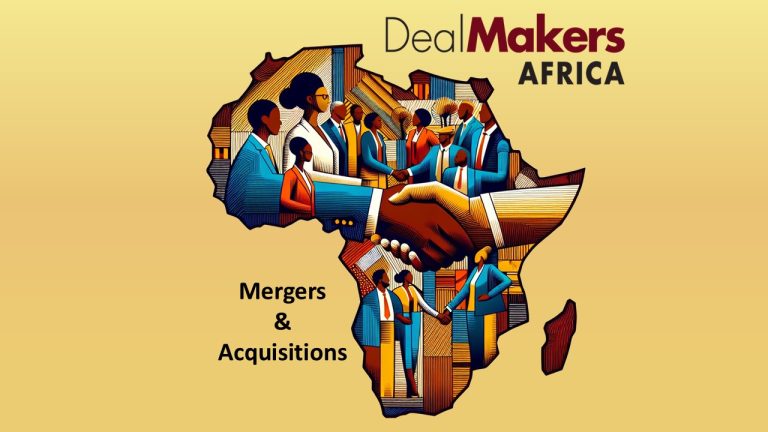Listen to the show using this podcast player:
In the year 2000, a lot happened. There was some questionable pop music. There was also the Dot-Com Crisis, followed by a period that saw incredible equity returns in South Africa until the Global Financial Crisis hit in 2007/2008. And during that important period in our local market, we also saw the emergence and initial growth of ETFs in South Africa, spearheaded by Satrix.
To reflect on 25 years of ETFs in South Africa, René Basson joined me to share the important milestones and fascinating stories that defined this journey. In doing so, it became clear just how much has changed in South Africa to make investing accessible to everyone.
Join us as we look back on how Satrix made it possible for everyone to own the market.
This podcast was first published here.
Disclaimer:
Satrix Investments (Pty) Ltd & Satrix Managers (RF) (Pty) Ltd is an authorised financial services provider. The information does not constitute advice as contemplated in FAIS. Use or rely on this information at your own risk. Consult your Financial Adviser before making an investment decision. While every effort has been made to ensure the reasonableness and accuracy of the information contained in this document (“the information”), the FSP’s, its shareholders, subsidiaries, clients, agents, officers and employees do not make any representations or warranties regarding the accuracy or suitability of the information and shall not be held responsible and disclaims all liability for any loss, liability and damage whatsoever suffered as a result of or which may be attributable, directly or indirectly, to any use of or reliance upon the information. For more information, visit https://satrix.co.za/products
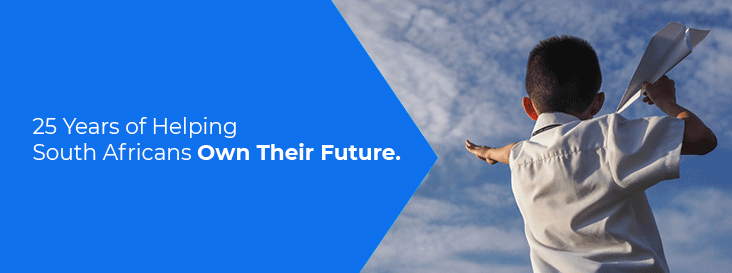
Full Transcript:
The Finance Ghost: Welcome to this episode of the Ghost Stories podcast. This is the last one for 2025 with the team from Satrix, and as has become somewhat of a tradition, we end off with René Basson. She is the Head of Brand and Marketing at Satrix.
It takes me about a year to convince her to actually emerge from the cave of marketing and come and speak on this podcast, and I’m always so glad when she does because we get a completely different lens on what’s happening at Satrix and all the excitement there.
And of course, we’re doing this in the year in which Satrix has turned 25. So, congratulations, René, to everyone at Satrix. Hopefully, there was a nice big birthday party and some cake.
René Basson: There was! Hi Ghost, thanks for having me, and I’m glad to have come out of the cave. It was a great party. We had it two weeks ago, on the 27th of November.
The Finance Ghost: Very nice. Were there 25 candles? Or is that how Satrix saves money and keeps the fees nice and low on these funds, and you only had a few candles to represent 25?
René Basson: We had two big lights, a two and a five. So, you know…
The Finance Ghost: There we go.
René Basson: …No candles.
The Finance Ghost: So yes, the short answer is yes. Very nice. [laughing]
René Basson: Yes.
The Finance Ghost: It’s great to be able to do this with you, and we will be chatting through the history of Satrix. I mean, it’s an obvious thing to do in such a big birthday milestone year.
And I think it’s a great thing to do, because people forget just how important Satrix has been to changing the way that South Africans can invest. Well, I’m not sure if they forget, but they certainly don’t always realise the role that Satrix has really played here.
So, let’s start at the beginning, which seems like a good place to start. That is all the way back in January 2000 – dot-com crash, top of an equity cycle. I spoke to Kingsley a few podcasts ago, and he was explaining what it was like to be working during the dot-com crash.
Not to make anyone feel old, but I was finishing primary school at that time. So, ETFs were not top of mind for me, I’ve got to tell you. But it was also roughly around that time that we saw the start of a bull market in South Africa, something I’ve not really experienced in my professional career until this year, actually.
And that bull market would last all the way until the global financial crisis, when Wall Street kind of ruined the party. This represented the era in which Satrix got off the ground and did a lot of stuff, which we’ll dig into shortly.
But let’s start in 2000. What was the backstory here on the launch of Satrix? Such an important moment for the South African investment landscape.
René Basson: It certainly was. Many people might think our story started on the 27th of November 2000, but in fact, it was early 2000 in January when our first institutional mandate of R800 million was awarded. The client was mCubed, our first institutional client.
So, our former CEO, Helena Conradie, spoke at this event that we had two weeks ago, and she said something that really resonated with me. She said, “Sometimes we forget that the world we now take for granted was once held together by courage and duct tape.”
And I thought that was a really nice way to put it. Because if you think about passive investing or indexation, it was largely unknown back then. The industry didn’t exist. We didn’t have the vocab yet.
So, establishing this capability for Satrix really required the collective effort of a group of (I suppose you could call them) visionary supporters, who recognised the potential of indexation strategies long before this industry even took shape. So, this group of people really took a calculated risk to lay the groundwork of a market that didn’t exist yet.
So, if you move forward from Jan 2000 to just 11 months later, in November, a joint venture between the JSE, Gensec Bank (which was Sanlam Investments’ team back then or Gensec Asset Management), and Corpcapital resulted in the listing of South Africa’s very first Exchange Traded Fund (ETF) on the 27th of November 2000. And that was the Satrix Top 40 ETF.
It was a R2.6 billion IPO, and it kind of marked the first formal emergence of this new era of investing in South Africa. Another really interesting thing that Helena mentioned during the speech was that Satrix, which is currently the dominant indexation player in South Africa, was born inside an active house.
And what this really shows is that the investment ecosystem really collaborated to do something brand new. It was the JSE, Deutsche Bank, Corpcapital, Gensec Bank – it was really phenomenal and really shows how everyone came together to develop a new industry. It’s really exciting.
You’re probably wondering about the name – Satrix. The name was decided upon in a meeting of key players. Obviously, a lot of meetings were happening back then.
The story goes that Mike Brown and the team were chatting about names. They were throwing around names like ‘Trax’, ‘A-trax’, ‘B-trax’, ‘Matrix’. Then he said, “What about South African Index Trackers – Satrix?” And it stuck.
So, if you think about that, it’s quite interesting, because there was no creative agency, no strategy consultants involved. It was just this name that stuck, and it’s been synonymous with indexation since then.
Another couple of interesting facts. In 2009, Satrix was jointly owned by Deutsche Bank and Sanlam in a 50/50 partnership, and in 2012, Sanlam bought the Deutsche stake in Satrix. So, apparently, neither Sanlam nor Deutsche Bank wanted to let Satrix go.
They ultimately agreed to do a Texas Auction, where both parties had to write down the price of what they were willing to pay for the other 50%. Both envelopes were opened at exactly the same time, and the highest bid bought the other 50% out.
There were no negotiations, and we both know who ended up and what the outcome was with that. That was the start.
The Finance Ghost: Fantastic! What a great story. I love the ‘courage and duct tape’. That reminds me of my first year of racing at Killarney when I raced two-stroke karts. I started in the Clubman’s series, which is basically where very old and sad karts go to die. It’s like their last hurrah.
You pick them up cheap, and there’s a very good reason for that. I promise you, ‘courage and duct tape’ is quite literally what was holding those things together, more than once. So, that’s a great analogy. I love it.
And also, great point around the name. I think a lot of great startups are named by the founder because they started on a shoestring budget. They don’t have a whole committee of people coming up with a name. And what a good name it is. Uniquely South African. So, I love that.
Let’s go back to that first listing, then, JSE Top 40. I think you said R2.6 billion. Still a big number, especially for 2000. That’s not a small number. Obviously, dwarfed by what we have today in the fund (I’m not sure how big the fund is actually, I’d love you to confirm that), but is that the biggest ETF?
And do you think it’s the product that Satrix is still best known for? Or has the product range gotten so broad now that it’s really the Satrix name that everyone knows, as opposed to Satrix Top 40, like it was all those years ago?
René Basson: It’s an interesting question. I think, possibly yes. It’s probably what we’re most closely associated with. So, it’s certainly our flagship product, and I’d say possibly considered the default when people are asked to think about a South African ETF.
It is our biggest local ETF. The market cap is approximately R20 billion. And then, it’s in the top three. The other two in the top three are the MSCI World Unit Trust and the ETF as well.
The Finance Ghost: Of course, the market cap is a bit bigger now than it was a year ago, because what a year it’s been for the JSE Top 40. Gold stocks have been doing the most, and some other big contributions as well, coming through from the likes of Prosus. So, it’s been a really fantastic year.
I wasn’t joking when I said that this has really been the first time that I’ve truly experienced a bull market in South Africa, where you just see that steady improvement in sentiment coming through, and coming through. I think 2026 is going to get very interesting. Hopefully, nothing goes wrong (touch wood).
Let’s go back to 2006. This was now my matric year, and I was starting to figure out what to study. I actually remember when the news came out about the Satrix Investment Plan. This was very interesting to me because suddenly, it made the market so much more accessible.
And when I went to university and I started with my typical student jobs (which means a combination of some restaurant stuff, and in my case, some tennis coaching as well, which was great), some of that extra money every month could go into a Satrix Investment Plan, even though it was a modest amount every month. I started nice and early, and just a cool product, really.
And this was a big step because it opened products up to retail ownership, just like for me as a student with the small amount that I could put away each month. And it encourages people to invest regularly, which is so important in that wealth-creation journey.
So, let’s hear about the Satrix Investment Plan. It’s now what, roughly 19 years old? So, almost two decades of that thing. What has the investor behaviour been in this plan? How successful has it actually been?
René Basson: Yeah, Ghost, I wish I’d heard about the Satrix Investment Plan back then. I was actually overseas at that point – I’m a little bit older than you, so I was working already.
The plan launched in 2006. It allowed retail investors to invest in the JSE-listed assets for the first time, for, as you said, R300 or, I think it was R1,000 lump sum. This was a significant reduction in the minimum investment requirements at the time, when I think brokerage was around R100 per transaction.
So, it made it really easy for South Africans to start investing. It was a pretty disruptive time, I think you’ve mentioned that. And it was probably considered the precursor to SatrixNOW, which launched nine years later in 2015, in partnership with EasyEquities.
So, in terms of investor behaviour, I think it introduced this monthly, direct debit type of approach to investing, which was quite significant. It created this outlook of consistency, good habit-forming behaviour – something that we at Satrix try to encourage a lot of, still to this day.
And it also reduced the amount that was needed, which was a really big step. Back then, investing was around lump sums. Only wealthy people could do it, because you needed a large amount of cash to invest.
So, I think it opened up the landscape for a new type of investor – who didn’t necessarily want to work via a stockbroker – and made it more accessible. I think there was a significant increase in retail investment participation back then, and it’s been a steady growth.
The Investment Plan has kind of been folded into SatrixNOW, so the platform has been growing steadily. There’s momentum behind it, almost in line with the indexation industry itself.
The Finance Ghost: Yeah, people forget, right? Because today, we’re so spoiled. You can go and invest, literally your lunch money (and we’ll get to that), in basically anything you like on the market, now that there’s fractional investing.
Certainly was not the case at that time. So…
René Basson: It definitely wasn’t.
The Finance Ghost: Yeah, no, it wasn’t at all. It was a proper game changer to be able to set up a debit order of a few hundred bucks a month. And R300 back then was a number. So, the South African economy was doing better. So, in some respects it was a number, in some respects it wasn’t. But obviously, inflation tells us that that R300 would have been a lot more today.
We’re so spoiled now. You can go and invest literally R50 a month today, if that’s all you can do. Whereas back then, you needed R300 a month, and that was revolutionary. So, just shows where we’ve come from.
Then in 2013, which is now just over a decade ago, that was the first global product. Incredible timing because it basically exactly caught the start of the tech wave. I think the Facebook IPO was probably around that time, and that just dominated the narrative since then, it really has.
So, you had the global financial crisis, then you had the banks getting highly regulated, and people started to look for, “Okay, well, what’s the next source of growth?” (because obviously it’s not Wall Street). And it was tech, and it was software as a service (SaaS). That was built up over that sort of time. That’s how the world changed.
Microsoft was not always an amazing business. It really became one in the past decade. It became way more lucrative. Companies like Adobe went and revolutionised the way people think about software. Now, of course, Adobe is getting really hurt by AI, so the good times come and they go.
But it was fantastic timing for Satrix to actually have this global product. So, today, or maybe if you go back a year or two, everyone was just talking about offshore.
Obviously, over the last year, the JSE has gotten a lot of attention. But at that stage, and just thinking where we were as a country politically last decade, lots and lots of investors were throwing money at management teams to take money offshore and get some action there.
So, did you see that kind of adoption in these global products straight away? Did people jump at it because they were so keen to get that exposure? Or did it actually take a while for that to actually take off?
And then also, what was that product journey? Because I don’t think the first product was an ETF, was it?
René Basson: No, it wasn’t. So, the first global product that we introduced was an offshore unit trust, the Satrix MSCI World Equity Index Fund. The ETF equivalent only came later in 2017, when we listed the international ETFs locally.
So, it was definitely timeous given the equity boom at the time, local sentiment deteriorating, making offshore exposure really attractive, and it served as an initial offshore access point before global ETFs were introduced.
At the time in 2013, the SARB did not allow for CISs to offer offshore listed ETFs back then, which is why we chose to do the unit trust. I think at the time, Deutsche Bank had a product under db Xtrackers.
I guess from a Satrix perspective, this launch caught the beginning of that tech wave, as you mentioned. So, it was really strategically well positioned in response to the appetite of investors back then. And anecdotally, the interest was really strong.
Adoption-wise, if you think back to 2013, this was still an index tracking product, and moving from active to passive is a mindset change. You know, from a personal perspective, I kind of feel like that mindset change has only really taken off in the last year and a half, surprisingly.
And back in 2013, retail investors would still, even now, probably need a significant amount of education around product and index tracking itself. And then, being a unit trust, it would have still needed the traditional distribution channels.
So, I’d say the momentum behind this product was probably gradual, and it built up over time. I can’t quantify it, but if you consider this is now one of our top three flagship funds, you can draw the conclusion that it was and still is a very popular product.
In terms of local versus global in terms of our AUM (Assets Under Management), from an ETF perspective, global is bigger. And from a unit trust perspective, local is a lot bigger from an AUM perspective, which is quite interesting.
The Finance Ghost: Yeah, that is quite interesting. And we’ll have to see what the next 10 years hold, of course, because lots of uncertainty over what’s going to happen with AI. Is it a big bubble? Although, as I learned on the last podcast with Nico, he doesn’t like that term. But is it a big bubble? (Sorry, Nico.) Or is it actually going to just keep pushing through? It’s going to be super interesting to see what happens.
And that’s the benefit of diversification, and that’s why it’s so important that Satrix has all these different products in the product suite. Because you can go and get this diversification, local, offshore, sector, whatever else you want, basically, using ETFs – which is great.
And now, of course, there’s a way that you can do it that is even easier. Because in 2015 (and this was a really big one for investors in South Africa, this is now a decade ago), you implemented the partnership with EasyEquities.
And again, EasyEquities, when they started, people were not sure. I remember when they came out, there was this overarching distrust. How is this possible? How can I buy a piece of a share? How can the brokerage be this low? So, kudos to what they’ve built over the past decade. Fantastic.
And I’m guessing for the likes of Satrix, through that partnership, that’s been a huge win for you guys as well. Because obviously, it just makes it so much easier for people to go and allocate to a Satrix ETF as part of their broader portfolio, right?
René Basson: Yeah, definitely. So, the partnership with EasyEquities started in 2015 for Satrix. And the story goes that our former CEO, Helena, saw a tweet from Charles, and the rest is history, as they say.
You could definitely say this ushered in a new era of digital investing, with the minimums reduced to zero and this fully digitised interface that EasyEquities had developed. And this innovation and collaboration was recognised. We won multiple FinTech Awards for the platform in partnership with Easy as well. So, really exciting times.
EasyEquities started in 2014, and I also actually remember it. I got a R50 voucher back then, and I obviously had no clue what this was. I was also very sceptical about it. But they had patented that fractionalisation of share rights, which meant that they could solve for two challenges that our business had at the time: the investment minimums and then the access – how do we give more people access to the market?
So, in May 2015, this tweet was discovered. I think Helena had come across it. The Satrix team really liked how EasyEquities presented themselves. They aligned very much in terms of our vision, values, philosophy.
The teams apparently met each other in June 2015. Development of the platform SatrixNOW started in August, and SatrixNOW launched in December 2015. So, if you look at this timeline, from a fintech perspective, this is really incredible. It’s very accelerated.
We launched the app for SatrixNOW in 2020. And I guess from an adoption point of view, if you look again, I mentioned the industry has taken its time. It’s been building momentum over time. The platform has been the same for us – the momentum has built slowly. It’s been steady growth.
We now have over 100,000 investors – active investors. So, we look at it specifically from active versus registered clients. The average age of a SatrixNOW investor is 38. And in terms of gender split, when we launched in 2015, it was 64% male investors, and now we’re sitting at 53% male investors. So, we’re really excited that we’ve been able to encourage more female investors over the years.
I think the average NAV is currently around R180,000, and the majority of our registrations for the platform come from referrals and digital channels. From a marketing perspective, it’s a great stat and a great source of information that helps us develop our marketing strategy as well.
So, yeah, the partnership with Easy has been fantastic. We work with them very closely on a daily basis, and it’s really transformed how Satrix was able to bring our products to market.
The Finance Ghost: Yeah, I love that. I love the fact that it was a R50 voucher because again, if we just go back to 2006 with the Satrix Investment Plan, the minimum debit order all the way back in 2006 was R300. And then you were getting a R50 voucher to go buy shares. It was so mind-blowing.
Again, people who have only started investing in this kind of pandemic and post-pandemic era don’t understand how weird it was to know that you could take your lunch money and invest it in shares instead. And that was some of the marketing at the time, if I recall correctly – that kind of thing. It was really amazing. I was working in corporate finance at the time, and I remember just how fascinating it was for us to see this thing play out. So, very, very cool.
If we then go forward a few years, 2019, you hit R100 billion AUM. Now you’re on almost R300 billion* AUM. So, it really has been quite a journey.
And as far as I know, there was even a Harvard case study along the way, around the time of the start of the pandemic. How did that come about? That must have been pretty interesting, right?
René Basson: Very, very interesting. And this kind of global recognition of the strategy of the business is really quite something to be very proud of. How it came about, I’m not actually quite sure.
I do think Helena and the team, the ExCo back then, obviously had some connection or were working with the team at Harvard.
The Finance Ghost: Maybe they saw a tweet. That’s how it all happens. Someone tweets something, and then partnerships are made.
René Basson: Exactly. This is really how the world works, right? And the case study was titled Satrix: Competing in the Passive Asset Management Industry in South Africa. It was published in 2020, and it focused on the strategic decisions that Satrix took around fee leadership and market positioning.
And there was a big focus on the 2017 fee cut of the flagship Top 40. And, my understanding is that there were four key ‘teaching’ angles that the case study looked at. So, they looked at the pricing strategy in passive markets – so, that fee cut on the Top 40 (we cut it from 38 bps to 10 bps in 2017), how the business framed that from a market leadership and brand promise point of view.
Then they looked at the competition and consumer perception around the fee cut and price elasticity – brand positioning, long-term commitment to low-cost investing. Then they also touched on the distribution and inclusion part, so the role of SatrixNOW and the partnerships with EasyEquities, for example.
Also touched on the partnership at the time with BlackRock (because we launched all our feeder funds in 2017), and scaling this access and education, and linking to the brand purpose of democratising investing.
And then the final thing was the execution risk and the operational model – so, how was the business delivering low tracking error at scale and supporting growth through internal technology?
So, it was apparently a phenomenal case study. We do have a copy somewhere. I need to haul it out, but yeah, this global recognition was quite something and really impressive.
The Finance Ghost: That is amazing. I mean, a Harvard case study is a pretty big deal. So, well done. It also shows that (and this is something I think especially this year, with everything going on geopolitically, people mustn’t forget) South Africa is on the global map.
René Basson: Definitely!
The Finance Ghost: Much as the US may be trying to turn us into a global pariah at the moment (which they will be very unsuccessful at), we are a really important emerging market. And I think with all the positive momentum we’ve got in South Africa, we’re becoming an even more important emerging market over time.
So, it is nice to see that. I do think that 2026 is going to be a very interesting year for the local market. I really hope that a lot of the momentum will continue.
I’m not sure that gold is going to continue the way it has been because that has been pretty wild. But I’m hoping that a lot of that love will now make its way into the mid-caps and some of the more ‘SA Inc.’ focused businesses. We’ll see what happens.
From your side, as we go into 2026, as we bring this year to a close, what do you think the brand really means to South Africans, and what could the year to come actually hold for you?
Where do you see this thing now as you go and reflect over the holiday? If you’re going to get a holiday, because you’ve told me there are a lot of exciting things coming! So, actually, the team’s keeping you very busy. Maybe that’s the answer, René – 2026 is going to have a lot?
René Basson: 2026 is going to be very busy, but I say this every year. The whole team, we say, “Oh, it’s going to be busy,” and then the next year is even busier, and yeah. 2026, watch this space. We have a lot of stuff going on. So, I’m excited.
But I think, from a brand perspective, the Satrix brand is really, really special (and I know I’m biased because I’m Head of Brand and Marketing). Our tagline is “Own the market.” And frankly, as a marketer, I couldn’t possibly have thought of a better tagline for a business like ours, purely because it really articulates what we do in three words. Instead of buying 40 shares on the JSE to get a slice of the Top 40, you can buy one. So, you literally ‘own the market’ through one transaction.
So, I think from a brand perspective, and what we mean to South Africans, we mean access and inclusion. We do a lot of work around education and trying to help people feel empowered – that they understand financial markets, that they understand what investing is – and getting to the crux of the basics.
And I think a lot of people, myself included – I didn’t know about investing when I went to university. You would have thought I did, but I probably wasn’t that interested either. But I love the work that we do around the education piece, and I think having the app, with a few clicks, you can invest in an ETF. It’s phenomenal.
From a value perspective, I think we mean low cost. Indexation is, by nature, low cost, but I think we’ve taken a lot of strategic decisions over the years to cut fees dramatically, and that definitely shows that we’re doing the best we can for our investors. The Harvard case study was a global endorsement of this and the strategy.
Then there’s the element of trustworthiness. We’re a financial services provider. We’re in a highly regulated industry, which is really phenomenal. And I think South Africa, as you said, we’re on the map. We got out of the grey listing. We’ve got a lot to be proud of.
And I think for our business, over two decades of experience, we really focus on low tracking error, a best-in-class team, and the breadth of product that we bring to the market. We’re constantly innovating, trying to do the best for our investors.
And I think finally, just to say, we’re the favourite. We’ve won a number of People’s Choice Awards, which are voted for by investors like you and me. And that’s kudos to the work that our team does, and I think it’s something to be very proud of.
I heard someone say in our 20th anniversary videos that we did, “People really can own the market because of Satrix.” And I think that’s something that we, as a business, sometimes forget to be really proud of.
It’s been 25 years of hard work, and as I said, industry stalwarts and people who were visionary have put us in this position now, and it’s really exciting to be part of that journey.
The Finance Ghost: 25 years of owning the market. That is the story at the end of the day, and it’s been a fascinating one to watch. I really have enjoyed it. I feel like I’ve lived it for many years before my Finance Ghost initiatives and ambitions there. So, it really has been great.
René, thank you. I think that brings the year to a close in style. It’s been a big year for Satrix. There’s a lot to come in 2026. I’m really looking forward to speaking to the team about everything that’s coming. We’re going to do another year of podcasts.
So, thank you for the ongoing support in Ghost Mail and, of course, the importance that you put on the Ghost Mail audience. I know that they get a huge amount of value from this.
And to listeners, if you’ve missed any of the Satrix podcasts this year, go back and listen to them. They are somewhat timeless in terms of the lessons that we talk about there, the investment insights, and a lot of the concepts. They’re not necessarily based on what’s going on in the world at that point in time.
We’ve done shows ranging from investing for your kids right through to trying to assess valuations in the market and when to be scared and when to double down, and it’s really these skills that will just help you on this journey.
So, René – and to the whole team at Satrix – thank you so much for another lovely year. Can’t wait to do this again in 2026, which means René, I will do another one with you 12 months from now, when we get you out of your cave in December 2026, and we talk about what the 26th year of Satrix has included.
René Basson: I look forward to it, Ghost. Thank you so much!
The Finance Ghost: Thank you, and to all the listeners, have a fantastic December holiday, and we will see you in January.
*Source: Satrix, 30 September 2025
Satrix Investments (Pty) Ltd & Satrix Managers (RF) (Pty) Ltd is an authorised financial services provider. The information does not constitute advice as contemplated in FAIS. Use or rely on this information at your own risk. Consult your Financial Adviser before making an investment decision. While every effort has been made to ensure the reasonableness and accuracy of the information contained in this document (“the information”), the FSP’s, its shareholders, subsidiaries, clients, agents, officers and employees do not make any representations or warranties regarding the accuracy or suitability of the information and shall not be held responsible and disclaims all liability for any loss, liability and damage whatsoever suffered as a result of or which may be attributable, directly or indirectly, to any use of or reliance upon the information. For more information, visit https://satrix.co.za/products

